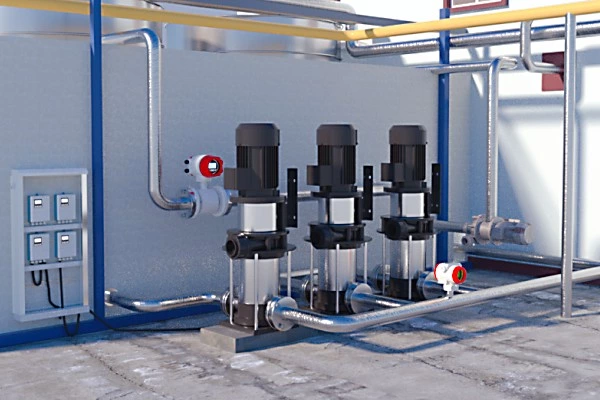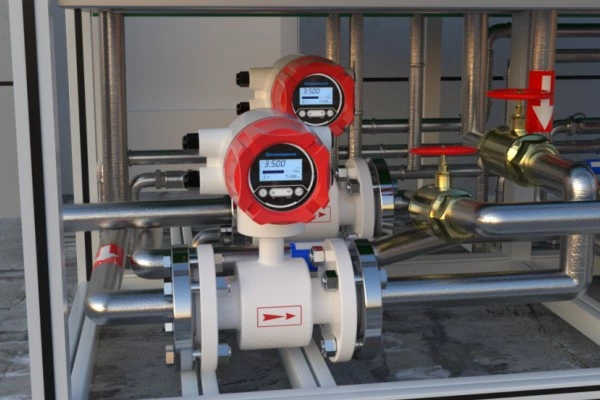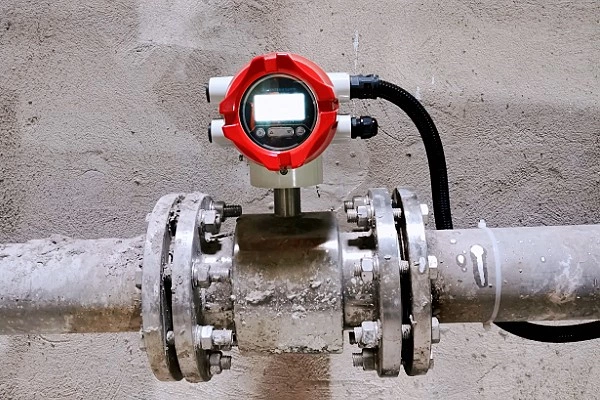Sea Water Flow Measurement
Sea water flow measurement is a critical process used in various industries and applications. Whether it's for marine research, shipbuilding, offshore operations, or environmental monitoring, accurately measuring the flow of seawater is essential for effective planning, analysis, and decision-making. In this article, we will explore the importance of sea water flow measurement, different methods and technologies employed, and the significance of precise data in various sectors.
Sea water flow measurement plays a crucial role in a wide range of industries and applications. Understanding and accurately measuring the flow of seawater is vital for several reasons, including marine research, shipbuilding, offshore operations, and environmental monitoring. Let's delve into the significance of sea water flow measurement in these domains and explore the various methods and technologies employed for this purpose.
Importance of Sea Water Flow Measurement
Marine Research and Environmental Monitoring
In marine research and environmental monitoring, studying the movement and behavior of seawater is essential to gain insights into ocean currents, tidal patterns, and marine ecosystems. Precise measurements of sea water flow enable scientists to better understand the impact of climate change, pollution, and natural phenomena on the oceans. It helps in tracking the dispersion of pollutants, monitoring the health of coral reefs, and assessing the overall environmental impact.
Shipbuilding and Design
For shipbuilders, accurately measuring the flow of seawater is crucial during the design and construction process. Understanding how water flows around the hull and other components of a ship helps optimize its performance, fuel efficiency, and stability. Flow measurements aid in the development of efficient cooling systems for engines and other onboard equipment, ensuring smooth operations and prolonging the lifespan of critical machinery.
Offshore Operations and Oil Exploration
In offshore operations and oil exploration, sea water flow measurement is vital for assessing the flow rates of oil and gas reserves. Accurate measurements enable the optimization of production processes, ensuring efficient extraction and minimizing environmental risks. Flow data helps in determining pipeline capacities, identifying potential leaks or blockages, and planning maintenance activities to prevent costly downtime.

Difficulties in Sea Water Flow Measurement
Measuring the flow of sea water presents several challenges compared to measuring the flow of fresh water or other fluids. The unique properties of sea water and the harsh marine environment contribute to these difficulties. Here are some of the key challenges faced in sea water flow measurement:
- Corrosion: Sea water is highly corrosive due to its high salt content. It can cause damage to the materials used in flow measurement devices, such as pipes, sensors, and meters. Specialized corrosion-resistant materials and coatings are required to ensure the longevity and accuracy of the measurement equipment.
- Fouling: Sea water contains various organisms, marine growth, and sediments, which can accumulate on the surfaces of flow measurement devices. This fouling can alter the flow characteristics and lead to inaccurate readings. Regular cleaning and maintenance are necessary to minimize fouling effects and maintain measurement accuracy.
- Density and viscosity: Sea water has a higher density and viscosity compared to fresh water. The density variations due to salinity and temperature changes can affect the accuracy of flow measurements. Special considerations and corrections are required to account for these density and viscosity variations in the measurement process.
- High flow rates: The flow rates of sea water can be significantly higher compared to other types of water. High velocities can introduce turbulence and flow disturbances, making accurate flow measurement challenging. The design of flow measurement devices and the selection of appropriate measurement techniques need to account for these high flow rates.
- Underwater installation and maintenance: Sea water flow measurement often involves underwater installations or subsea applications. This introduces additional difficulties in terms of accessibility, visibility, and maintenance. Divers or remotely operated vehicles (ROVs) are typically required for installation, inspection, and repair tasks.
- Electrochemical effects: The conductivity of sea water can introduce electrical interference and induce errors in flow measurement devices that rely on electrical signals. Proper grounding, shielding, and signal filtering techniques are necessary to mitigate these effects and ensure accurate measurements.
- Harsh environmental conditions: The marine environment is harsh, with exposure to saltwater, humidity, high temperatures, and mechanical stresses. These conditions can degrade the performance and reliability of flow measurement equipment over time. Robust and rugged designs, along with appropriate protective measures, are essential to withstand these environmental challenges.
Addressing these difficulties in sea water flow measurement requires specialized instruments, careful calibration, regular maintenance, and adherence to industry standards and best practices. Continuous advancements in technology and materials help overcome these challenges and improve the accuracy and reliability of flow measurements in marine environments.
Methods of Sea Water Flow Measurement
Several methods and technologies are employed to measure the flow of seawater accurately. Let's explore some of the commonly used techniques:
Mechanical Flowmeters
Mechanical flowmeters, such as turbine and paddlewheel flowmeters, utilize rotating parts to measure the velocity of seawater. These devices convert the flow rate into mechanical motion, which can then be translated into volumetric or mass flow measurements. Mechanical flowmeters are robust, cost-effective, and suitable for a wide range of flow rates. However, they may require periodic maintenance and calibration.
Ultrasonic Flowmeters
Ultrasonic flowmeters use sound waves to measure the velocity of sea water. They emit ultrasonic signals into the water and analyze the time it takes for the signals to travel between transducers. By considering the velocity of sound and the time difference, these flowmeters determine the flow rate accurately. Ultrasonic flowmeters are non-intrusive, making them ideal for applications where minimal disturbance to the flow is desired.
Electromagnetic Flowmeters
Electromagnetic flowmeters, also known as magmeters, utilize Faraday's law of electromagnetic induction to measure the flow of conductive liquids like seawater. These flowmeters consist of a pipe with a pair of electrodes that create a magnetic field. As the seawater flows through the pipe, it generates a voltage proportional to its velocity, allowing for accurate flow measurements. Electromagnetic flowmeters are highly accurate, unaffected by changes in salinity, and have no moving parts.
Differential Pressure Flowmeters
Differential pressure flowmeters measure the pressure drop across a constriction in the flow path caused by the seawater's velocity. By calculating the pressure difference, these flowmeters estimate the flow rate accurately. Orifice plates, Venturi tubes, and flow nozzles are examples of differential pressure flow measurement devices commonly used in sea water applications. These flowmeters are relatively inexpensive but may introduce pressure losses and require careful calibration.
Acoustic Doppler Current Profilers
Acoustic Doppler Current Profilers (ADCPs) are specialized instruments used to measure ocean currents and flow velocities. They emit sound waves into the water and analyze the frequency shift of the reflected signals caused by the motion of particles within the flow. ADCPs provide detailed information about the direction and speed of currents at various depths, making them valuable tools for oceanographers and marine scientists.
Considerations for Accurate Measurement
When measuring the flow of seawater, several factors need to be considered to ensure accuracy and reliability. These factors include:
- Flow Rate and Velocity: Understanding the desired flow rate range and the expected velocity of seawater helps in selecting the appropriate flow measurement method and device.
- Salinity and Temperature Compensation: Seawater salinity and temperature can affect the density and viscosity of the water, which, in turn, influence flow measurements. Compensating for these factors ensures accurate and consistent results.
- Corrosion Resistance: Seawater contains various corrosive elements that can degrade measurement devices over time. Selecting materials and coatings resistant to corrosion is essential for maintaining accurate measurements and prolonging the lifespan of the equipment.
Applications of Sea Water Flow Measurement
Sea water flow measurement finds applications in various sectors. Let's explore some key areas where accurate flow data is crucial:
Oceanography and Climate Research
Oceanographers rely on precise sea water flow measurements to study ocean currents, circulation patterns, and the transport of heat and nutrients. Understanding these processes is vital for climate research, weather prediction, and modeling the effects of global warming.
Shipping Industry
In the shipping industry, sea water flow measurement helps optimize vessel performance and fuel consumption. Accurate measurements of water flow around the hull aid in reducing drag and improving maneuverability. It also assists in ballast water management, ensuring compliance with environmental regulations and preventing the spread of invasive species.
Offshore Energy Sector
For offshore energy production, accurate flow measurements are essential for assessing the performance of turbines and other energy extraction systems. Flow data enables operators to optimize power generation, monitor equipment health, and detect any abnormalities or malfunctions.
Desalination Plants
Desalination plants use sea water flow measurements to monitor the efficiency of the desalination process, track the saltwater intake, and regulate the flow rates through various treatment stages. Accurate measurements ensure optimal operation and maintain the quality and quantity of freshwater production.
Environmental Protection
In environmental protection efforts, sea water flow measurement assists in tracking the dispersion of pollutants, evaluating the effectiveness of mitigation measures, and understanding the impact of human activities on marine ecosystems. It provides valuable data for developing sustainable practices and policies to preserve the health of our oceans.

Advantages and Limitations of Different Measurement Methods
Each sea water flow measurement method has its advantages and limitations. Mechanical flowmeters are cost-effective but may require maintenance. Ultrasonic flowmeters are non-intrusive but can be affected by water conditions. Electromagnetic flowmeters are highly accurate but require proper grounding. Differential pressure flowmeters are economical but introduce pressure losses. ADCPs provide detailed current profiles but are more specialized and complex to operate. Choosing the most suitable method depends on the specific requirements of the application.
Future Trends in Sea Water Flow Measurement
As technology advances, several trends are shaping the future of sea water flow measurement:
- Advances in Sensor Technology: Smaller, more accurate, and reliable sensors are being developed, allowing for enhanced measurement capabilities in challenging marine environments.
- Integration with IoT and Data Analytics: Sea water flow measurement devices are becoming part of interconnected systems, enabling real-time data collection, analysis, and remote monitoring.
- Automation and Remote Monitoring: Automated measurement systems with remote accessibility are gaining prominence, reducing the need for manual intervention and improving efficiency and safety.
Conclusion
Accurate measurement of sea water flow is crucial for a wide range of industries and applications. Whether it's for marine research, shipbuilding, offshore operations, or environmental protection, precise flow data enables informed decision-making, optimization of processes, and sustainable practices. By employing various measurement methods and considering key factors, such as flow rate, salinity compensation, and corrosion resistance, we can ensure reliable and valuable sea water flow measurements.
FAQs
Q1: How does sea water flow measurement impact marine research?
Sea water flow measurement provides valuable data for studying ocean currents, tidal patterns, and marine ecosystems. It helps researchers understand the impact of climate change, pollution, and natural phenomena on the oceans.
Q2: Can sea water flow measurement improve ship performance?
Yes, accurate flow measurements help optimize ship performance by enhancing fuel efficiency, stability, and cooling system design. It aids in developing efficient cooling systems for engines and prolonging the lifespan of critical machinery.
Q3: What role does sea water flow measurement play in offshore oil exploration?
Sea water flow measurement is essential for assessing the flow rates of oil and gas reserves. It enables the optimization of production processes, identification of potential leaks or blockages, and planning of maintenance activities.
Q4: How are advancements in sensor technology impacting sea water flow measurement?
Advancements in sensor technology are leading to the development of smaller, more accurate, and reliable sensors. This allows for enhanced measurement capabilities in challenging marine environments.
Q5: What are the future trends in sea water flow measurement?
The future trends in sea water flow measurement include integration with IoT and data analytics, advances in sensor technology, and automation with remote monitoring systems, improving efficiency, and providing real-time data insights.





